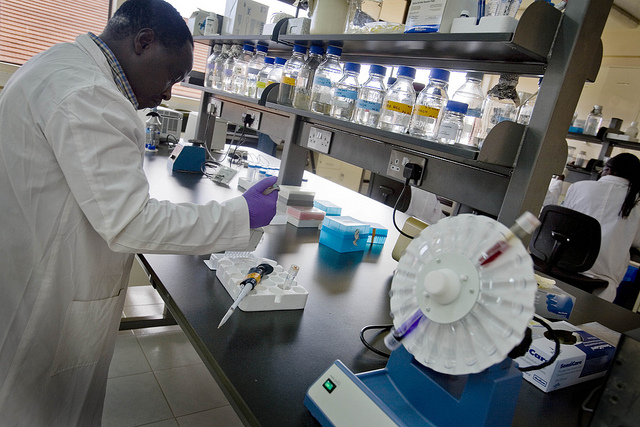
London, UK, 18 May 2023 – Bloomsbury Genetic Therapies Limited, a clinical-stage biotechnology company developing potentially curative treatments for patients suffering from rare neurological and metabolic diseases based on clinically proven gene therapy technologies, announced today that pre-clinical data from two of its brain-targeted programs, BGT-INAD and BGT-NPC for the treatment of Infantile Neuroaxonal Dystrophy (INAD) and Niemann-Pick Type C Disease (NPC) respectively, were presented at the American Society of Gene and Cell Therapy (ASGCT) 26th Annual Meeting in Los Angeles, California.
The presentation entitled “AAV9-Mediated Gene Therapy in a Knock-In Mouse Model of Infantile Neuroaxonal Dystrophy” (Poster No. 685) highlighted pre-clinical proof-of-concept results for BGT-INAD, a first-in-class AAV gene therapy for the treatment of INAD. Treatment of neonatal and juvenile pla2g6-inad mice with BGT-INAD via intracerebroventricular (ICV) administration resulted in significantly extended survival, improved motor functions, as well as ameliorated neurodegeneration in multiple brain regions, supporting the therapeutic potential of this approach. The long-term study in juvenile mice is currently ongoing with results expected in the second half of this year.
A second presentation entitled “A Novel Small NPC1 Promoter Enhances AAV-Mediated Gene Therapy in Mouse Models of Niemann-Pick Type C Disease” (Poster No. 696) detailed key pre-clinical in vivo findings demonstrating the superior therapeutic efficacy of the novel, minimal NPC1 endogenous promoter used in BGT-NPC compared to common promoters used in gene therapy. Following ICV administration in clinically relevant NPC1 mouse models, treatment with BGT-NPC demonstrated enhanced NPC1 protein expression, resulting in a significant increase of animal survival, attenuated neuropathology, as well as improved locomotor deficit.
Following positive regulatory engagements with the UK Medicines and Healthcare products Regulatory Agency (MHRA) in April, whose outcomes will be communicated in June, and building on the compelling results achieved to date, further pre-clinical studies are currently underway to support successful clinical translation of these two programs.
“The presentations at this year’s ASGCT meeting have highlighted key positive pre-clinical results for our investigational AAV9-based gene therapies for NPC and INAD, supporting our advancement of these programs,” said Adrien Lemoine, Founder and Chief Executive Officer of Bloomsbury. “We are continuing our efforts, together with our academic partners at UCL, to accelerate the delivery of these promising therapies to patients and families affected by these devastating conditions.”
– ENDS –
Enquiries
Julia Wilson
JW Communications
Tel: +44 (0)7818 430877
About Bloomsbury
Bloomsbury is a clinical-stage biotechnology company, developing potentially curative treatments for patients suffering from rare neurological and metabolic diseases based on clinically proven gene therapy technologies. The Company was spun out of University College London and launched in October 2022 with funding from UCL Technology Fund. Bloomsbury is building a pipeline of highly differentiated first- or best-in-class programs. For more information, please visit www.bloomsburygtx.com
About BGT-INAD
BGT-INAD is a neuron-targeted AAV9 investigational gene therapy designed to provide a potentially curative solution to INAD patients following a one-time injection in the cerebrospinal fluid (CSF). BGT-INAD is currently completing preclinical studies, with compelling preclinical efficacy data already demonstrated.
About BGT-NPC
BGT-NPC is a neuron-targeted AAV9 investigational gene therapy designed to provide a potentially curative solution to NPC patients following a one-time injection in the cerebrospinal fluid (CSF). BGT-NPC is currently completing preclinical studies, with compelling preclinical efficacy data already demonstrated.
About Infantile Neuroaxonal Dystrophy (INAD)
INAD is a devastating and fatal autosomal recessive paediatric neurodegenerative disease caused by mutations in the PLA2G6 gene that affects the catalytic activity of its protein product, a calcium-independent phospholipase A2 protein located in mitochondria and axons. When PLA2G6 is defective, mitochondrial inner membrane integrity is damaged, and phospholipid accumulation in axons causes neuronal damage. Given greater disease awareness and advances in next generation sequencing technologies, INAD is increasingly diagnosed at a younger age, with the majority of affected children now diagnosed by 2 years of age. Symptoms usually begin between 6 months and 3 years of age and include a rapid decline in previously acquired skills such as walking and talking, with the subsequent evolution of seizure, axonal neuropathy and generalised spasticity leading to loss of neurodevelopmental skills and complete dependence for all daily living activities. From presentation, there is gradual loss of motor and cognitive skills, most losing ambulation by 5 years of age with the average age of death around 10 years of age. There are currently no disease-modifying treatments for INAD and affected patients derive limited clinical benefit from available medical therapies used for symptom control. The incidence of INAD is poorly documented and around 300 patients suffering from INAD have been identified currently worldwide.
About Niemann-Pick Disease Type-C (NPC)
NPC is a rare, inherited and fatal neurodegenerative disease. 95% of NPC cases are caused by mutations in the Npc1 gene that encodes for NPC1, a large glycoprotein which is embedded in the lysosomal membrane. Even though the exact function of NPC1 is unknown, when it is mutated or absent, both cholesterol and sphingolipids accumulate in the brain, liver, lungs, bone marrow, and spleen. Sphingolipids are known to play important roles in signal transduction and nerve-fibre insulation, and their abnormal storage leads to irreversible neurological damage. There are several disease subtypes which are categorised by the age of onset of neurological disease. The patients develop progressive disabilities such as impairment in swallowing and speech, epilepsy, cerebellar ataxia (an inability to coordinate balance, gait, extremity and eye movements), and progressive dementia. The speed of progression of symptoms depends on the age of onset, which ranges from just after birth through to late adulthood and after disease onset. There are no approved treatments for NPC in the US. Miglustat is approved in the EU, but its use only slows disease progression. There are no curative treatments currently approved for NPC and there is a significant need to improve the standard of care. The incidence of NPC is estimated to be ~1:100,000 live births worldwide.
